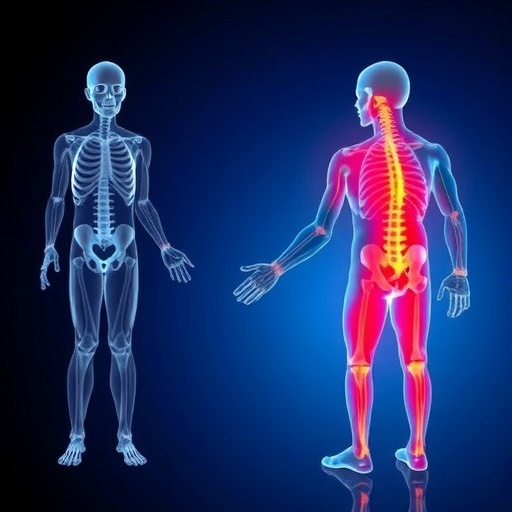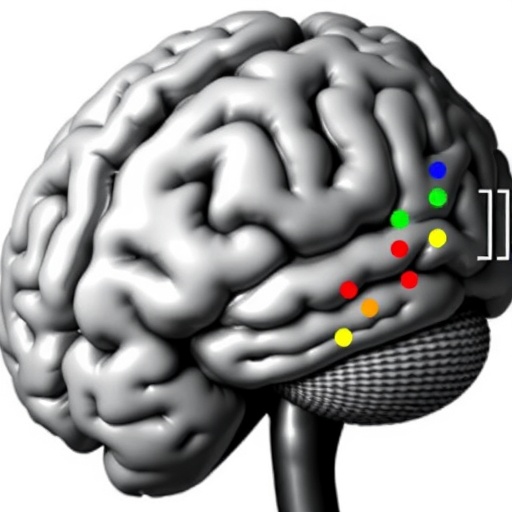Philadelphia, September 16, 2025 — In an era marked by unprecedented demographic shifts, new research has illuminated the significant influence of population aging on the escalating global burden of musculoskeletal disorders. Published in the prestigious Annals of the Rheumatic Diseases, this landmark study represents the most comprehensive analysis to date, quantifying the complex interplay between demographic changes and the incidence, prevalence, and economic impact of musculoskeletal diseases across 204 countries and territories over a span of three decades, from 1990 to 2021.
Musculoskeletal disorders encompass a broad spectrum of conditions including osteoarthritis, rheumatoid arthritis, gout, osteoporosis, and chronic back pain, which collectively rank among the primary causes of disability worldwide. The study aimed to dissect the contribution of population aging to the rising incidence of these conditions, disentangling it from other demographic variables such as population growth, and epidemiological factors including age-specific incidence rate changes. This nuanced approach allowed researchers to assess how shifts in demographic structures directly translate into healthcare burden and costs on a global scale.
The investigators utilized the Global Burden of Disease (GBD) 2021 database—an unparalleled repository of health metrics—and applied sophisticated statistical methods to separate three intertwined influences: population growth, aging, and changes in disease-specific epidemiology. By doing so, they illuminated previously obscured trends showing that population aging alone is responsible for a significant portion of the increased burden of musculoskeletal disorders in roughly one-third of countries analyzed. This finding underscores aging not merely as a correlating factor but as a principal driver in certain geopolitical and socioeconomic contexts.
A particularly striking result is the disproportionate impact observed in middle-income countries. Although these countries generally possess younger populations than high-income nations, the rapid pace of demographic aging exacerbates their musculoskeletal disease burden. The health systems in these regions often lack the necessary infrastructure and resources to manage the complex needs of an aging population afflicted by chronic, disabling conditions. This mismatch predicts escalating challenges for healthcare delivery and social support systems unless preemptive public health strategies are implemented.
Sex-specific analyses revealed critical disparities in how population aging affects men and women globally. Men in high- and upper-middle income countries exhibit a greater increase in musculoskeletal disorder burden attributable to aging, whereas women in low- to middle-income nations bear a relatively higher impact. These variations likely reflect differences in occupational exposures, lifestyle factors, healthcare access, and biological susceptibilities, demanding tailored interventions that consider gender alongside socioeconomic status.
Among the various musculoskeletal conditions studied, osteoarthritis emerged as the most significantly influenced by population aging worldwide, followed by gout and rheumatoid arthritis. The progressive wear and tear characteristic of osteoarthritis, coupled with the immune-mediated inflammation seen in rheumatoid arthritis, highlights the multifactorial nature of these diseases and the importance of integrating demographic trends with pathophysiological understanding in healthcare planning.
The economic ramifications detailed in the study are profound. Population aging-related musculoskeletal disorders accounted for an estimated US$96 billion in global healthcare expenditures in 2021 alone. This figure corresponds to approximately 0.10% of the global gross domestic product (GDP), overtaking the financial burdens linked to commonly modifiable risk factors such as smoking, obesity, and physical inactivity. These costs encompass direct medical treatment, long-term care, rehabilitation, and indirect costs stemming from disability and lost productivity.
Dr. Hai-Feng Pan, the study’s lead investigator, emphasized the heterogeneous nature of population aging’s impact on musculoskeletal health. According to Dr. Pan, middle-income countries face not only rapidly aging populations but also a lack of preparedness in their healthcare infrastructures. “Our findings highlight the urgent need for health systems in these regions to build capacity and resilience geared towards the unique challenges posed by aging-related disorders,” he stated, advocating for policy reforms and investment in geriatric musculoskeletal health.
Co-lead investigator Dr. Shi-Yang Guan further elaborated on the policy implications, stressing how the results equip policymakers with the evidence necessary to design interventions finely tuned to sociodemographic realities and disease-specific burdens. He envisions a multipronged approach that bolsters preventive measures, improves disease management, and ensures sustainable financing to mitigate burgeoning costs and improve patient outcomes. Guan advocates for changing the way aging populations are served by public health systems globally, with a concerted focus on musculoskeletal health.
The importance of a global perspective on these findings is echoed by Professor Lyn March, a renowned authority in musculoskeletal epidemiology. She stressed that musculoskeletal health issues represent a colossal and growing challenge, urgently necessitating global strategies to address the physical, emotional, and economic toll of these conditions. “Without concentrated effort, societies will grapple increasingly with loss of mobility, chronic pain, and diminished quality of life among billions,” Professor March warned, reinforcing the call for immediate and sustained action.
Editor-in-Chief of the Annals of the Rheumatic Diseases, Dr. Josef Smolen, underlined the critical need for intensified research and innovation targeting musculoskeletal disorders within the context of aging populations, especially in the European Union and globally. He posited that an integrated research agenda, combining epidemiological insights with advances in treatment and prevention, is pivotal to attaining healthful aging and reducing the enormous personal and societal burdens generated by these diseases.
Methodologically, the study capitalized on advanced demographic modeling and epidemiological analysis, leveraging detailed age-stratified incidence data and economic modeling techniques. This approach provided unprecedented granularity, enabling the attribution of disease burden and costs to specific demographic factors rather than crude population metrics. The integration of such data is anticipated to reshape public health priorities and orient healthcare delivery towards upstream demographic determinants.
In summary, this groundbreaking research reframes the narrative around musculoskeletal disorders, shifting attention toward the demographic drivers of disease burden and the imperative for health systems worldwide to adapt accordingly. By quantifying the undeniable role of population aging in increasing global musculoskeletal disease incidence and costs, it sets the foundation for informed, equitable, and sustainable healthcare policies directed at one of the most universal but underappreciated dimensions of public health.
As populations continue to age dynamically around the world, this study serves as a clarion call to health professionals, researchers, policymakers, and communities to unite in addressing the multifaceted challenges posed by musculoskeletal disorders. The findings provide a roadmap for proactive strategies that not only confront the rising tide of disability and economic strain but also enhance quality of life and functional independence for aging individuals globally.
Subject of Research: People
Article Title: The impact of population ageing on musculoskeletal disorders in 204 countries and territories, 1990-2021: global burden and healthcare costs
News Publication Date: 16-Sep-2025
Web References:
https://doi.org/10.1016/j.ard.2025.08.002
https://ard.eular.org/
References: Guan et al., Annals of the Rheumatic Diseases, 2025; Global Burden of Disease 2021 dataset
Image Credits: Annals of the Rheumatic Diseases / Guan et al.
Keywords: population aging, musculoskeletal disorders, osteoarthritis, rheumatoid arthritis, gout, global health burden, healthcare costs, epidemiology, demographic transitions, disability, health economics
Tags: chronic back pain and aging populationdemographic changes and health impactdisability from musculoskeletal disorderseconomic costs of musculoskeletal conditionsepidemiological factors in disease incidenceGlobal Burden of Disease database analysisglobal burden of musculoskeletal diseaseshealthcare burden of aging populationsosteoarthritis and disability trendspopulation aging and musculoskeletal disordersrheumatoid arthritis prevalence worldwidetrends in musculoskeletal disease over three decades





